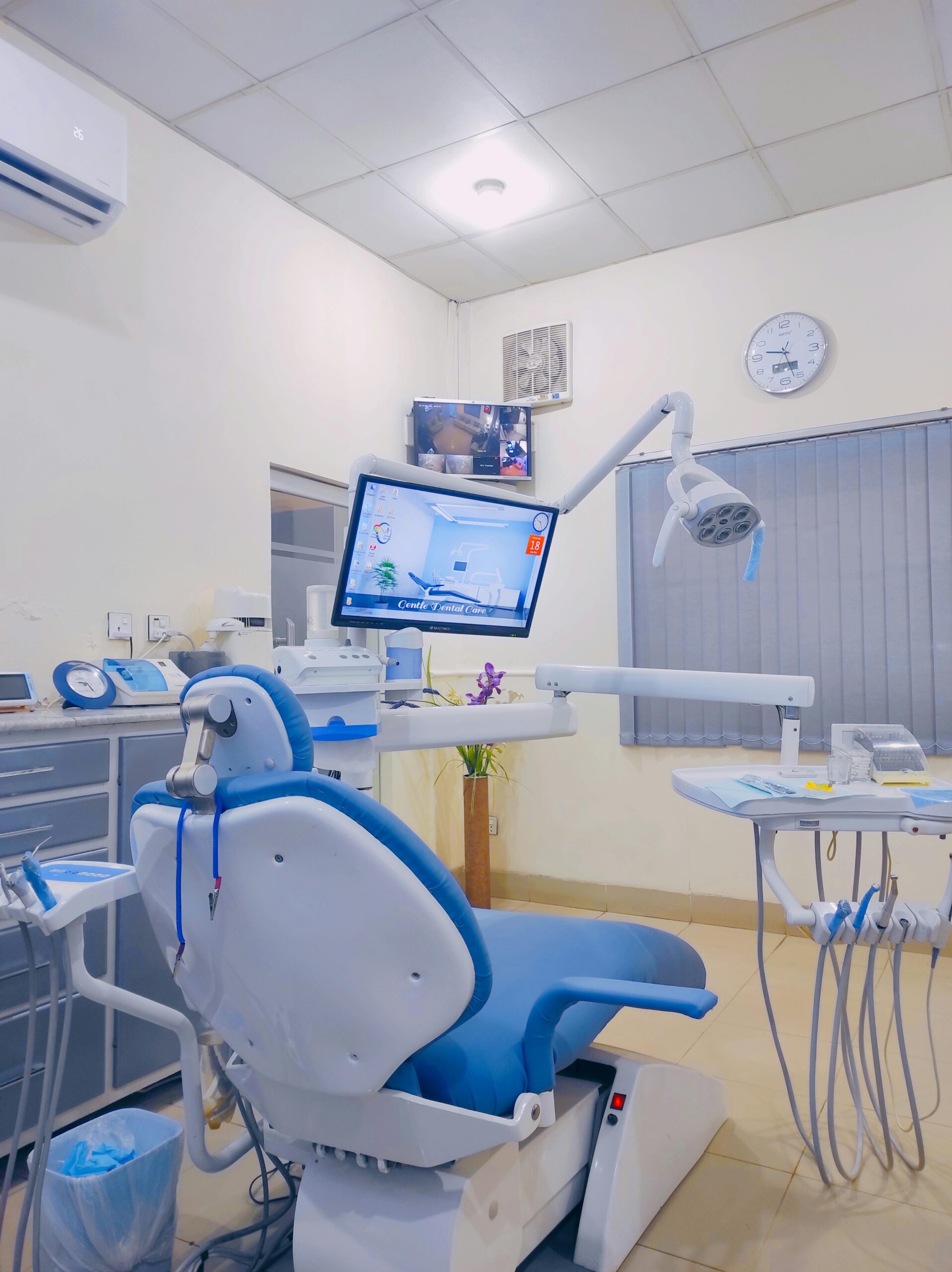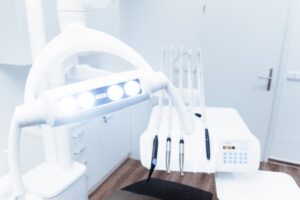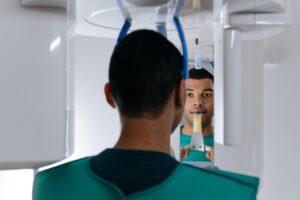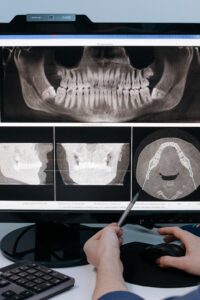
I. Understanding Dental X-rays
A. Basic overview of dental X-rays: What they are and how they work
Dental X-rays, also known as radiographs, are images of your teeth and mouth tissues that give your dentist a detailed insight into your oral health.
- Dental X-rays work by passing an electromagnetic radiation beam through the mouth. As the radiation penetrates different structures in the mouth, it is absorbed at various rates, creating a radiographic image.
- There are several types of dental X-rays, including bite-wing, periapical, and panoramic X-rays. Each serves a unique purpose, providing detailed images of different areas of your mouth.
- The process of getting a dental X-ray varies based on its type. Generally, your dentist places a small sensor or film in your mouth, which captures the X-ray images.
B. Purpose of Dental X-rays
Dental X-rays offer essential diagnostic information that cannot be seen with just a visual examination, such as:
- Detecting tooth decay hidden between teeth or underneath existing fillings.
- Revealing bone loss associated with gum disease or other infections.
- Assisting in planning comprehensive dental procedures such as tooth extractions, root canals, and dental implants.
C. Prevalence of Dental X-rays
Dental X-rays are a common diagnostic tool in dentistry.
- According to the American Dental Association (ADA), approximately 500 million dental X-rays are taken each year in the U.S.
- Most adults receive dental X-rays during routine dentist visits to screen for oral disease.
- Digital dental X-rays are also becoming more common, providing more in-depth images and cutting the radiation exposure in half compared to traditional radiographs.
II. Advantages of Dental X-rays
A. Early Detection of Dental Issues
One of many significant advantages of dental X-rays is their ability to spot problems early.
- X-rays can identify early signs of tooth decay, gum disease, and bone infections before they become serious health threats.
- Case studies show that dental X-rays have often detected oral cancer, benign tumors, and early-stage tooth decay that would have otherwise gone unnoticed.
- Catching these issues early can lead to easier and more effective treatment, potentially saving patients pain, time, and money.
B. Treatment Planning
X-rays play a pivotal role in developing an accurate treatment plan for various dental issues.
- For instance, before placing a dental implant, your dentist would use X-rays to check bone quality and determine the best placement for the implant.
- Another routine use of dental X-rays is in orthodontic planning. They can provide clear images of tooth positioning and any growth in the jaw.
- Studies have shown that utilizing X-rays in treatment planning significantly improves outcomes and patient satisfaction.
C. Monitoring Dental Health
Using dental X-rays to routinely monitor oral health can lead to a host of benefits.
- X-rays can show the progression or regression of dental conditions, helping your dentist adjust your treatment plan if necessary.
- Regular monitoring of dental health with X-rays allows both the dentist and the patient to stay ahead of any potential issues.
- A variety of case studies have demonstrated the usefulness of X-rays in keeping track of and improving oral health over time.
III. Risks and Concerns of Dental X-rays
A. Exposure to Radiation
While necessary for diagnosing and treating dental issues, X-rays do entail some degree of radiation exposure.
- Dental X-rays expose patients to small amounts of radiation. However, the radiation dose from a set of dental X-rays is much lower than the dose one would receive from natural background radiation over a regular day.
- Despite the low doses, concerns about radiation exposure are still legitimate. Some experts argue that any amount of radiation can potentially be harmful, especially with frequent exposure.
B. Potential Health Risks
It’s essential to acknowledge the debated link between X-rays and certain health conditions, despite the lack of concrete evidence.
- Some studies suggest potential associations between repeated dental X-rays and certain types of cancer. However, these links remain under ongoing scrutiny, and current research has not definitively proven these risks.
- As with any health procedure, it’s essential to consider varying viewpoints within the medical community.
C. Mishandling and Misinterpretation
Sometimes X-ray errors can happen, whether due to technique, equipment, or human error in interpretation.
- From blurring caused by patient movement to improper exposure settings, erroneous execution of dental radiographs can lead to inaccurate diagnoses.
- Misinterpretation of X-rays can also lead to incorrect treatment, potentially exacerbating the original health issue.
- These concerns underline the importance of seeking dental services from highly trained and competent professionals.
IV. Mitigating Risks: Steps Dental Professionals and Patients Can Take
A. Procedures to Minimize Radiation Exposure
Several methods can minimize exposure to radiation during dental X-rays.
- Many professionals utilize lead aprons and thyroid collars to block scatter radiation.
- Dental X-ray equipment now often includes rectangular collimation, which dramatically reduces irradiation of unnecessary tissues.
- Most research demonstrate that these protective measures can significantly reduce radiation exposure.
B. Knowing When to Order Dental X-rays
Determining if and when an X-ray is necessary and beneficial is crucial.
- Criteria often include presenting symptoms, patient history, risk of disease, and benefits versus potential risks.
- This decision-making process should ideally be shared between the dentist and patient, establishing trust and mutual understanding.
C. Important Patient Questions to Ask your Dentist
Patients have a role to play in their own healthcare decisions.
- Asking your dentist about the necessity, process, and safety of the X-ray can help ensure your peace of mind.
- It’s crucial to advocate for your health, ensuring your dentist has provided satisfactory answers to your questions.
- Open communication between the patient and dentist promotes transparency and trust.
V. Conclusion: Balancing the Scales
As we’ve seen, dental X-rays offer invaluable insights into oral health, facilitating early detection and effective treatment of potential problems. However, like any medical procedure, they also come with potential risks, primarily related to radiation exposure. Establishing a balanced perspective on dental X-ray use requires both dental professionals and patients to weigh these benefits against the potential concerns. Armed with information and trust, they can make informed decisions that prioritize overall health and wellbeing. In this context, dental X-rays remain an indispensable tool for maintaining our optimal oral health.
Our Reading dental clinic is committed to providing you with a beautiful smile every time you visit us. Whether you need X-ray or any other dental services, our team of highly trained dentists is here to provide you with the highest quality care. Our aim at Smiles in Reading is to give you a smile that is both comfortable and respectful. With online appointment scheduling, you can now receive dental care of the highest quality. Our dental professionals are here to help you enhance your smile and teeth.


